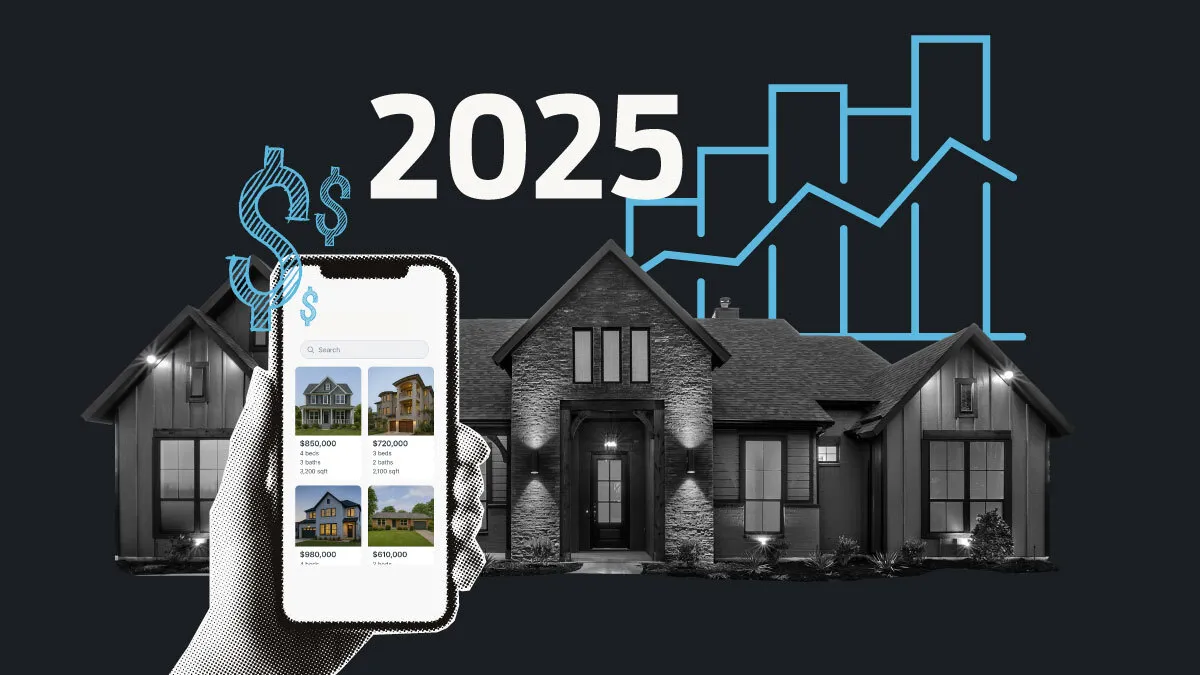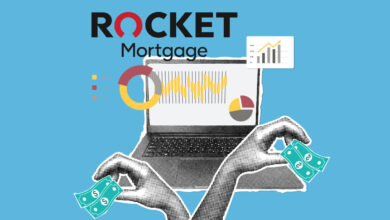More bang, less money: budgeting for paid digital marketing

Digital marketing is a powerful tool, but with 61% of marketers identifying traffic and lead generation as their biggest challenge, and the industry headwinds we face with high interest rates and inventory shortages, budgeting effectively for paid marketing channels have never been so big. critical.
Situation
In today’s competitive marketplace, the pressure to make every marketing dollar count is immense. Real estate professionals and mortgage brokers face the challenge of maximizing their advertising impact amid rising digital advertising costs. With a plethora of channels available, from Google Ads to social media platforms like Facebook and Instagram, it can be difficult to decide where to spend your budget. The goal is to efficiently reach potential buyers and borrowers with timely messaging, so that each channel contributes to a cohesive and profitable marketing strategy.
Complication
The digital marketing landscape is constantly evolving, with algorithm changes, new ad formats and changing consumer behavior adding layers of complexity. Allocating your budget without a clear strategy can lead to overspending on ineffective channels or missing out on high-performing channels. For example, while Google Ads can drive high-intent traffic, social media platforms offer robust targeting options and engagement metrics. Navigating these choices requires a deep understanding of each platform’s strengths and how they align with your business goals.
Questions to think about
- What are your primary marketing goals?
- Are you focused on brand awareness, lead generation or conversions?
- Who is your target group?
- Which platforms do they often visit and how do they interact with advertisements on those platforms?
- What is your total budget?
- How much can you realistically allocate to each channel while maintaining a positive ROI?
- How will you measure success?
- What Key Performance Indicators (KPIs) will you track to assess the effectiveness of each channel?
Define clear objectives
Start by identifying the primary goal of your marketing campaign. Then choose where you want to spend your marketing budget. Each platform has its own unique capabilities and different appeal to different target groups.
Google Ads is especially effective at driving high-intent traffic: individuals who are actively searching for real estate or mortgage services. This platform targets potential customers when they are most likely to convert, making your investment more efficient. By focusing on keyword strategies and search intent, you can ensure that your ads appear at the right time, leading to higher conversion rates.
LinkedIn offers another benefit, especially for reaching professionals interested in real estate investing. Detailed targeting options let you narrow your audience by job titles, industries, and other demographics so your ads reach people who are more likely to be engaged. LinkedIn is ideal for B2B marketing, especially in niches such as commercial real estate or high-end mortgage services.
Platforms such as Facebook and Instagram are indispensable for greater reach. Facebook’s massive user base and detailed targeting capabilities make it ideal for increasing brand awareness and engaging a wide audience. The various ad formats (carousel ads, video ads and sponsored posts) provide creative flexibility, while advanced analytics enable precise campaign adjustments.
Known for its visually driven content, Instagram is particularly effective for showcasing properties, interior designs and virtual tours. Features such as Stories, Reels and IGTV provide dynamic content that attracts the attention of potential buyers or renters. The platform’s integration with store features also facilitates direct user actions, increasing its role in lead generation.
TikTok, with its rapidly growing user base, offers unique opportunities to reach younger demographics. The short, engaging video content is perfect for creative and interactive marketing campaigns. TikTok’s algorithm promotes content based on user interests, making it possible to go viral and reach a wide audience organically. This platform is especially effective for generating buzz and connecting with a younger market segment.
By strategically aligning your marketing efforts with these platforms and regularly assessing campaign performance, you will ensure that your marketing budget is both efficient and effective. A data-driven approach, using metrics like conversion rates, cost per lead (CPL), and return on ad spend (ROAS), allows you to make informed decisions, reallocate your budget as needed, and continually refine your strategies.
Understanding your audience
To maximize your digital marketing budget, a thorough understanding of your target audience is crucial. Different demographics have different online habits, and to effectively allocate your budget, you need to know where these groups spend their time.
Platforms like Instagram and TikTok dominate among a younger audience that primarily engages with visual and short-form content. These platforms offer unique opportunities for creating dynamic, engaging ads that resonate with younger users. Using Instagram Stories or TikTok Challenges can grab attention and drive significant engagement from these demographics.
Older, more affluent individuals often gravitate toward platforms like Facebook and LinkedIn, which focus on more professional or community-oriented content. Facebook’s extensive targeting tools and broad user base make it ideal for reaching diverse audiences, while LinkedIn is particularly effective for targeting professionals and B2B marketing, especially in niches like commercial real estate.
Understanding these preferences can help you tailor your marketing strategies to the habits and behaviors of your target audience, ensuring that your advertising budget is spent on platforms most likely to convert your desired audience. Adjusting your budget allocation based on these insights will maximize your ROI and generate more leads and conversions.
Diversify your expenses
To minimize risk and maximize effectiveness, it’s critical to diversify your digital marketing budget across multiple channels. Over-reliance on one platform can be risky, especially if performance fluctuates. A well-rounded strategy leverages the unique strengths of each platform, ensuring broader audience reach and reducing reliance on a single channel.
Consider allocating 40% of your budget to search ads, 30% to social media ads, 20% to retargeting campaigns, and 10% to display ads.
- Search Ads: Platforms like Google Ads are very effective at driving high-intent traffic and targeting users who are actively searching for real estate or mortgage services.
- Social Media Ads: Facebook, Instagram, and LinkedIn ads offer robust targeting options and the ability to engage users across different content formats. These ads increase brand awareness, drive engagement, and attract leads from diverse demographics.
- Retargeting campaigns: These campaigns target users who have previously visited your website but did not convert. By showing them relevant ads while they visit other sites, you increase the chance of conversion.
- Display ads: Display ads, which appear on various websites, are useful for increasing brand visibility and reaching a wide audience. These ads are like digital billboards and complement your search and social media efforts by keeping your brand top of mind for potential customers.
Track and adapt
Regular monitoring and adjustment are critical to optimizing your digital marketing campaigns. Use analytics tools to track key performance indicators such as click-through rates (CTR), cost per lead (CPL), and return on ad spend (ROAS). These metrics provide valuable insights into which channels are performing well and which may need adjustments.
Check your campaign data regularly to identify trends and patterns. For example, if social media ads have high CTR but low conversion rates, you may need to examine your landing pages or ad targeting. If Google Ads is generating leads at a lower CPL than other channels, consider allocating more budget to this high-performing area.
Be prepared to make adjustments based on your findings. Reallocating resources from underperforming channels to channels that deliver better results ensures efficient use of your marketing budget. Furthermore, it is crucial to remain agile and responsive to changes in the market, as consumer behavior and platform algorithms can change, which can impact the effectiveness of campaigns. By continually testing and adjusting your strategies, you can stay ahead of these changes and maintain optimal performance.
By closely monitoring and adjusting your campaigns, you can make data-driven decisions that maximize the return on your marketing investment. This proactive approach ensures that your advertising dollars are spent wisely, creating better results for your real estate or mortgage business.
Conclusion
Effective budgeting for paid digital marketing requires a strategic approach, constant monitoring and a willingness to adapt. By setting clear goals, understanding your target audience, diversifying your spend, and tracking performance, you can make your marketing budget work harder and smarter, driving better results for your real estate or mortgage business. In an industry where every lead counts, a well-planned budget is not only an asset, but also a necessity.
Justin Ulrich is the vice president of marketing at Evocalize.
This column does not necessarily reflect the opinion of HousingWire’s editorial staff and its owners.
To contact the editor responsible for this piece: [email protected]




